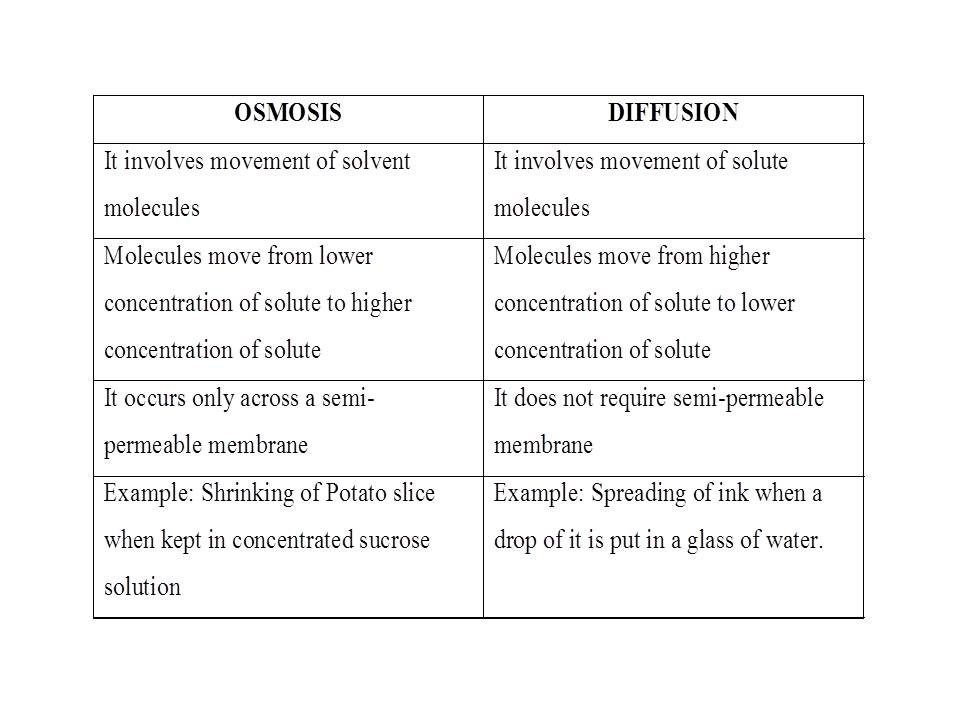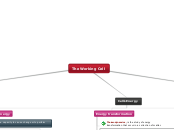The Working Cell
Cell's Membrane
Membrane stucture
The plasma membrane is the boundary that enclose a living cell.
Composed of
1- Bilayer of phospholipids.
2- Embedded and attached proteins.
The steroid cholesterol helps stabilize the membrane temperature.
Different types of cells have different membrane proteins.
Six major functions performed by membrane proteins
1- Help maintain cell shape and coordinate changes.
2- Signal transduction: Receptor for chemical messengers (signaling molecules).
3- Enzymatic activity: enzymes grouped in a membrane to carry out sequential steps of a metabolic pathway.
4- Cell-Cell recognition: their attached carbohydrates function as identification tags that are recognized by membrane proteins of other cells.
- recognition allows cells to reject foreign cells.
5- Intercellular junctions: a protein attach adjacent cells.
6- Transport of substance across the membrane.
Selective Permeability: allow sme substance to cross more easily than others.
Many ions and molecules require transport protein to enter or leave the cell.
- Non-polar molecules cross easily.
e.g. Carbon dioxide - Oxygen.
- Polar molecules do not cross easily.
(Require transport protein).
e.g. Glucose.
An important figure in page 54 to understand.
Membrane Transportation
Diffusion and Osmosis
Diffusion, the tendency for particles of any kind to spread out evenly in an available space.
Molecules vibrate and move randomly as a result of a type of energy called thermal energy (heat).
.
One result of this motion is diffusion.
Much of the traffic across cell membranes occurs by diffusion.
Molecules move from lower concentration of solute to higher concentration of solute.
Osmosis is the diffusion of water across a membrane.
Water cross a membrane by passive transport.

Solvent Molecules move from lower concentration of solute to higher concentration of solute.


Concentration gradient means from high concentration to low concentration.
Equilibrium, Molecules still move back and forth, but there is no net change in concentration.
(when the concentration is the same.)
a solute is a substance that dissolve in a liquid solvent, producing a solution.
Passive Transport
Passive Transport: diffusion across a membrane with no energy investment.
The molecules diffuses down its concentration gradient.
Oxygen enter the cell.
Carbon dioxide passes out of the cell.
Both are essential for metabolic.
Both are Small, nonpolar. (cross easily).
Facilitated Diffusion is a type of passive transport.
Because it does not require energy.
Polar or charged substances can move across a membrane with the help of specific transporter protein in a process called facilitated diffusion.
Transport protein, provides a hydrophilic channel that some molecules or ions use as a tunnel through the membrane.
e.g. Aquaporins, protein channel allows the entry or exit of water molecules. (3 billion molecule per second)

Active Transport
Active Transport: the transport that requires energy to move a solute against its concentration gradient.
ATP molecule supplies the energy for most active transport.
Active Transport Process :-
A solute molecules (in the cytoplasm) attach to specific binding site on the transport protein.
Thet ATP transfers a phosphate group to the transport protein.
The protein change shape in such a way that the solute is released on the other side of the membrane.
The phosphate group detaches, and the transport protein returns to its original shape.
Figure 4.5 - Page 56
Endocytosis and Exocytosis
Exsocytosis
A cell use Exocytosis process to export bulky materials.
such as Proteins and polysaccharides.
Exocytosis Process :-
A transport vesicle filled with macromolecule buds from Golgi apparatus and moves to the plasma membrane.
The vesicle fuses with the plasma membrane, and the vesicle's contents spill out of the cell.
Endocytosis
A cell use Endocytosis process to import large molecule.
A cell membrane fold inward enclosing materials from the out side
There are three kinds of endocytosis :-
Phagocytosis or "cellular eating"
1- The cell engulfs a particle by packaging it within a membrane-enclosed sac, large enough to called vacuole.
2- The vacuole then fuses with a lysosome, whose hydrolytic enzymes digest the contents of the vacuole.
Example: an amoeba takes in a food particle via phagocytosis.
Pinocytosis or "cellular drinking"
Process: The cell gulps droplets of fluid into tiny vesicle.
It takes in any and all solutes dissolved in the droplets.
not specific
Receptor-mediated endocytosis.

The 3 types of endocytosis
Cell's Energy
Forms of energy
Energy: the capacity to cause change or to perform work.
Kinetic energy, is the energy of motion.
Thermal energy (Heat), is a kinetic energy associated with random movement of atom or molecules.
Light energy, another type of kinetic energy, can be harnessed to power photosynthesis.
Potential energy, is energy that matter possess as a result of its location or structure.
Example: Water behind a dam.
Molecules possess potential energy because of the arrangement of electrons in the bonds between their atoms.
Chemical energy, is the potential energy available for release in a chemical reaction
Chemical energy is the most important type of energy for living organisms; it is the energy that can be transformed to power the work of the cell.
Energy transformation
Thermodynamics, is the study of energy transformation that occur in a collection of matter.
The first law of thermodynamics (Low of energy conservation)
- State that the energy in the universe is constant and energy can be transferred and transformed, but cannot be created or destroyed.
- Plant cells convert light energy to chemical energy.
The second law of thermodynamics
- Energy conversions increase the entropy (disorder) of the universe.
- During every energy transformation, some energy is lost as heat.
Cellular respiration, the chemical energy stored in organic molecules is converted to a form that cell can use to perform work.
Cells convert about 38% of the chemical energy in their fuel to energy for cellular work.
The other 66% generates heat.

Glucose + Oxygen >> Cellular Respiration >> Carbon dioxide + water.
Metabolism, is a series of chemical reactions that either
1- Catabolism: break down a complex molecule.
2- Anabolism: build up a complex molecule.
ATP
ATP (1)shuttles chemical energy and (2)drives cellular work.
ATP, Adenosine Triphosphate, is the energy currency of cells.
ATP, is the immediate source of energy.
that power most forms of cellular work.
Composed of:
1- Adenine ( nitrogenous base ).
2- Ribose sugar ( Five-carbon sugar ).
3- Three phosphate group.

ATP = ADP + Phosphate group + Energy
Energy released by hydrolysis reaction.
Enzymes
Enzymes are molecules that function as biological catalysts.
Enzymes function is speed up the cell's chemical reaction.
activation energy is the energy barrier that must be overcome before a chemical reaction can begin.
Enzymes speed up a reaction by lowering the activation energy needed for a reaction to begin.
Enzymes increasing the rate of a reaction without being consumed by the reaction.
Activation energy barrier reduced by enzyme.
Almost all enzymes are proteins.
High-energy systems tend to change toward a more stable state of low energy.
The energy barrier of activation energy protect the highly ordered molecules of your cell from spontaneously breaking down.
Most of the complex molecule of your cells are rich of potential energy.
Heating a cell will speed up all chemical reactions, not just the necessary ones, and too much heat will kill the cell.
Each enzyme has a particular target molecule called the substrate.
Enzymes have three-dimensional shapes.
The enzyme has an active site where the enzyme interact with the enzyme's substrate.
Each cellular reaction catalyzed by a specific enzyme.
For optimum activity, enzymes require certain environmental condition.
Temperature is very important and optimally,
human enzymes function best at 37 C.
High temperature will denature human enzymes.
Enzymes also require a pH around neutrality (7pH) for best results.
Some enzymes require non-proteins helper
Cofactors are inorganic, e.g. Zinc, Iron, Cooper.
Coenzymes are organic molecules and are often vitamins.
Enzyme Inhibitors
1- Block enzyme action.
1- competitive inhibitor.
Compete for the active site.
Block substrate from entering the active site.
2- non-competitive inhibitors.
Change the shape of enzymes active site.
2- Regulate enzyme activity in a cell.
Inhibitors are chemical that inhibit enzyme's activity.

How enzymes work
